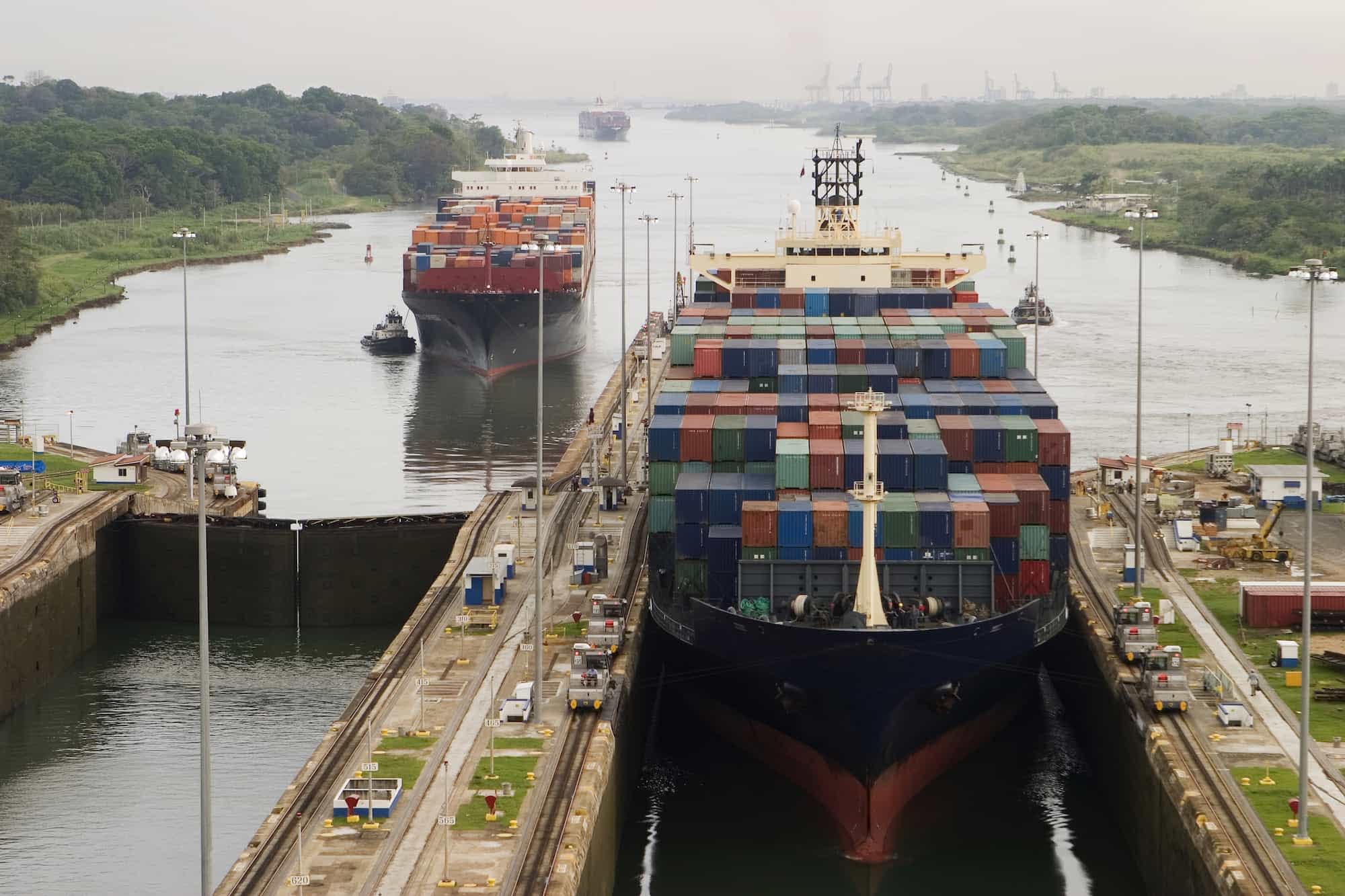
April 15, 2016
The Panama Canal is Getting Wider: Here’s What it Means for American Commerce
The Panama Canal is Getting Wider: Here’s What it Means for American Commerce
An expanded Panama Canal will open by the end of June this year. The expansion is one of the biggest developments in maritime trade in decades. When the canal first opened in 1914, it cut 8,000 miles and several weeks of transit time off the journey between the Pacific and the Atlantic. Widening the canal will once again transform the flow of trade in North America.
In addition to creating a new lane for traffic, the canal will be widened to allow larger ships to sail through. After the expansion, it will be able to accommodate vessels of up to 14,000 TEUs in size, up from the 5,000 TEUs it can currently handle. Flexport analyzed the implications this carries for the U.S. freight industry and its customers.
Regional Economics: Shifting from the West Coast to the East Coast
The wider canal will make it cheaper to bring goods from Asia to the East Coast and parts of the Midwest.
Currently, most goods from Asia are shipped to U.S. West Coast ports, then railed or trucked to the Midwest and to areas as far east as Pennsylvania. After the canal expansion, larger vessels will be able to sail from Asia all the way to East Coast ports, lowering the average transportation cost of each container.
Based on our analysis, we expect that businesses in a large part of the country will shift from using West Coast ports to East Coast or Gulf Coast ports. That area is highlighted in orange below.

Most businesses in the highlighted orange area currently rely on West Coast ports to receive goods: Los Angeles-Long Beach, Oakland, Seattle, and Vancouver. After the expansion, shipping through the East Coast will be especially attractive to businesses that are more price-sensitive and less time-sensitive. For a company in the orange region, it will become cheaper to handle goods through East Coast ports, although doing so will add a few weeks to the total transit time. Whether a switch makes sense will depend on a company’s time preferences, price sensitivity, and costs of working capital.
We expect many companies around Cincinnati, Cleveland, Columbus, Louisville, and Memphis will shift to shipping through the East Coast and Gulf Coast ports (e.g., New York-New Jersey, Norfolk, Savannah, Charleston, Houston). Many of these Midwestern and Southern cities are significant distribution hubs by truck, rail, or air, which is why their surrounding areas will also be affected.
To get a closer look at areas we expect to be affected, Flexport has created an interactive map delineating the region.
The Impacted Stakeholders
In summary, the widening of the Panama Canal means:
**American shippers have more cost-effective routing options. **Notably, certain Midwestern and Southern states benefit the most.
East Coast and Gulf Coast ports will gain cargo volume at the expense of West Coast ports. A report from the Boston Consulting Group and C.H. Robinson estimates that around 10% of all cargo volume will shift from West Coast ports to other coastal ports. It’s a big deal for every East Coast port, almost all of which are smaller than their West Coast counterparts. While West Coast ports will see small declines in volume (or instead, slower growth), East Coast ports like Philadelphia, New York, and Norfolk will each see significant increases relative to the current volumes they handle.
Railroad cargo operations will also be affected. The cheaper route scenarios to the East Coast and Gulf Coast will be a big blow to rail operators such as BNSF Railway and Union Pacific. They’re both Western U.S. railroad networks that will lose significant cargo volume; carriers like Maersk and MSC are already starting to offer direct service to Houston, so shipments may not need to be railed from Los Angeles. In the meantime, Eastern U.S. railroad networks like CSX and Norfolk Southern will be able to pick up significantly more cargo volume.
There are additional considerations that will determine the speed of this impact. One factor is whether infrastructure on the East Coast will be able to handle more cargo; some ports are already facing congestion issues, and it’s not clear how much extra rail capacity is available. It is also unclear if there will be any potential labor constraints. Ultimately, we maintain that the Panama Canal’s expansion will have a material effect on American commerce flow.
Flexport is a freight forwarder for the internet age. Learn more about how we provide visibility and deliver world-class service for our clients here.





